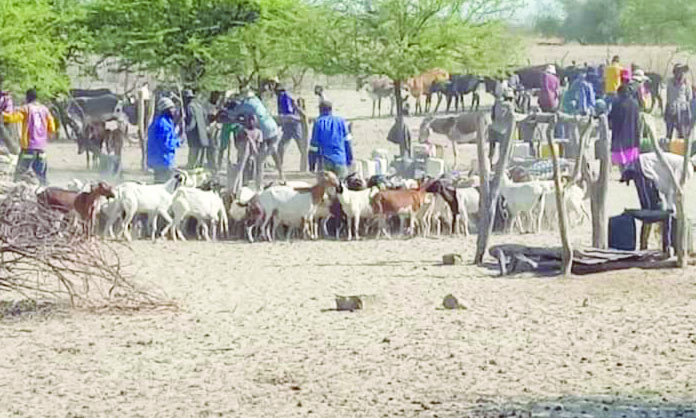The Namibia Water Corporation (NamWater) says it is unable to meet total water demand for the four northern regions due to high population and industrial growth causing constant water rationing and resulting in critical water shortages.
The demand from the Oshakati water treatment plant in the Oshana region to the three regions: Oshikoto, Omusati and Ohangwena, is 60 000 cubic metres per day resulting in a total monthly demand of 1,8 million cubic metres per month.
NamWater’s current supply stands at 51 600 cubic metres per day resulting in a total supply of 1,6 million cubic metres per month.
This update follows after many rural areas within the Ohangwena, Oshana and Oshikoto regions have been without water for close to two months due to the low pressure water supply challenges.
NamWater’s chief strategy and corporate affairs officer Kadiva Hamutumwa says overall, this has resulted in a deficit of 13 824 cubic metres per day and 300 000 cubic metres per month.
“Considering that the water supplied to the Oshikoto and Ohangwena regions is supplied from the Oshakati treatment plant, the upstream users abstract more than their daily consumption needs. Some of the individual customers have set up elevated storage tanks and pumps connected to the main pipelines that draws more water, which results in the villages along Ondangwa-Omutsegwonime pipelines not receiving sufficient water. Those are some of the challenges that NamWater is currently facing,” she says.
Hamutumwa says another challenge NamWater faces is the power interruptions that negatively impact water supply at various stations.
Currently, the water levels upstream within the Omusati region are good and the water has arrived in the Oshakati treatment plant, she says.
The Oshakati foredam is currently at 100% capacity.
“The supply systems to the Ondangwa, Omuthiya, Omafo and Oshikango areas are running efficiently as required, however, we have been experiencing power supply outages that impact the corporation’s ability to timeously supply. The lack of water supply currently experienced in some areas is due to the high demand for which projects have been identified.
“The water has reached the Oshakati treatment plant at full scale and the purification process and distribution are in full swing,” says Hamutumwa.
The Omuthiya reservoir has been filled and it currently stands at 30% capacity and so far water has reached Omutsegwondjamba, while the water supply in the Omakango-Omafo and Omafo-Eenhana areas has returned to normal, with just some minor work needed to fill all the reservoirs and pipelines, she says.
“Given the current supply challenges, the following solutions have been put in place: provision of water tankers throughout the Oshikoto region, a total of five tankers have been deployed to the Onankali onwards to all the hot spot areas. Rationing of water in the Oshakati, Ondangwa and Omafo areas from 22h00 to 05h00 daily in order to build up the water supply capacity in the reservoirs.
“This enables NamWater to continuously supply towards the far south of Oshikoto region,” she says.
Oshikoto Regional Council public relations officer Petrus Nehale said the regional council has allocated N$634 615 during the current financial year for rural development programmes and will be utilised in the construction of short water pipelines.
“Council wish to inform the public, especially the residents of the Oshikoto region, that in collaboration with the Ministry of Agriculture, Water and Land Reform, we have secured 10 water tanker trucks, to provide emergency water supply to affected communities in our region. Therefore, communities that are critically faced with water shortages and not registered under the programme of water tanker services will be registered at their respective constituency offices to equally be supplied with water,” he says.
Stay informed with The Namibian – your source for credible journalism. Get in-depth reporting and opinions for
only N$85 a month. Invest in journalism, invest in democracy –
Subscribe Now!






